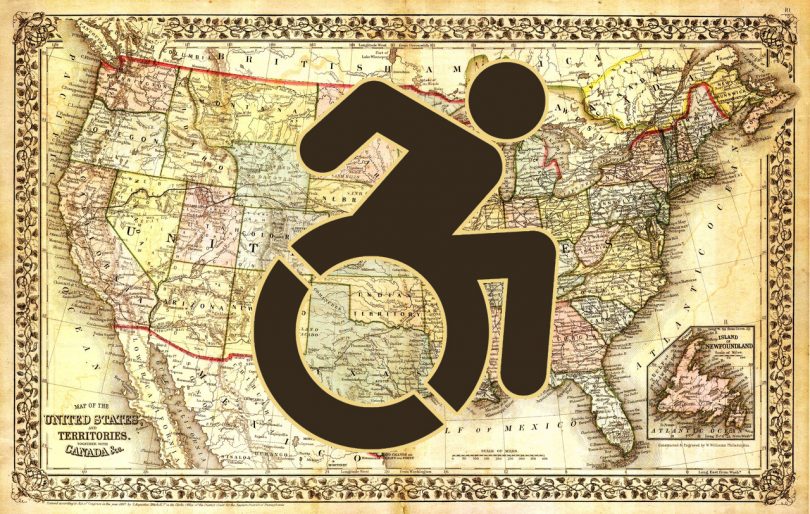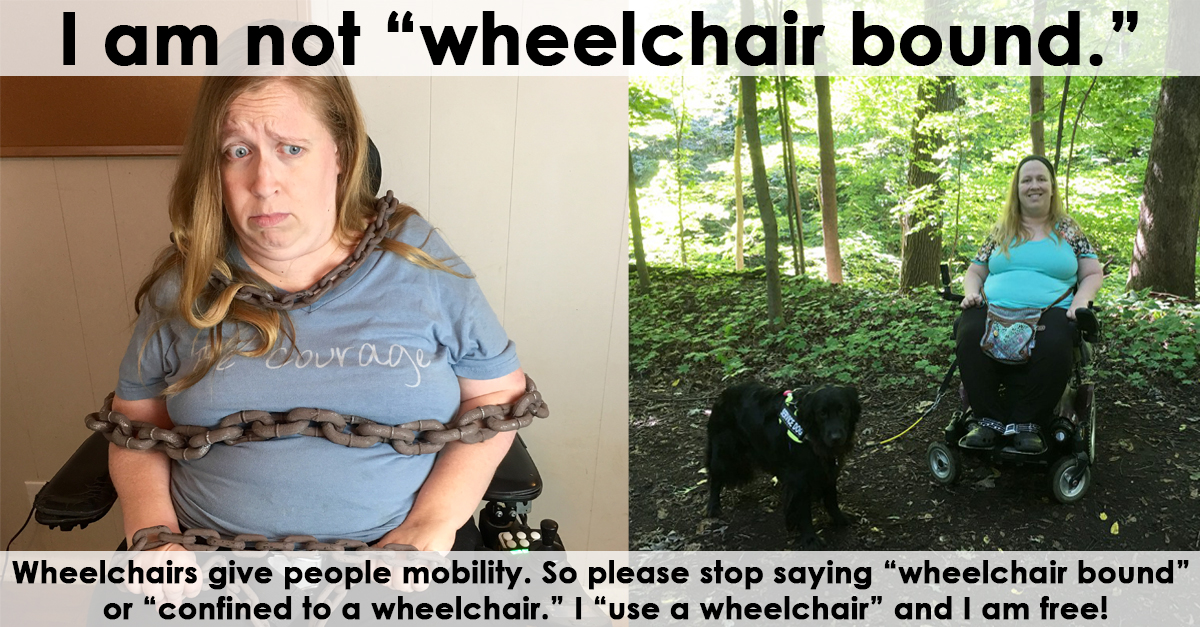If you have a disability, you may be in need of home care services, a Medicaid personal care attendant to help you with everyday tasks such as dressing, bathing, cooking and cleaning. If you have a child with significant medical needs or a developmental disability, you may be seeking help to care for them while you’re at work or sleeping, or financial support to be their carer yourself. Perhaps you have an aging parent or relative who needs care in their home so they don’t have to go to a nursing home. Medicaid waiver home and community-based services programs can help you or your loved one with a disability live independently. However, it can be difficult to understand how these complicated programs work, and even harder to get enough support to not just survive, but thrive.
As someone who has a physical disability and needs assistance with nearly all activities of daily living, I have had personal care assistants all my life, and began receiving PCA services through Medicaid waivers in 2012. When I applied for Medicaid-based home care services, I was frustrated by how difficult it was to get into the program and obtain enough hours of home care to meet my needs. But over the years I’ve found a few solutions and strategies for dealing with these challenges. While things aren’t perfect, I now have the support I need to live a full life. Meanwhile I’ve watched as so many others struggle without home care or with too few hours to even cover basic needs, and I want to help. I’ve had several people ask me to share what I’ve learned along the way, so here is my guide to getting personal care attendant services via a Medicaid waiver.
Part 1: Understanding Medicaid Home and Community-Based Services (HCBS) Waivers
If you’ve looked into receiving personal care attendant, direct service professional, homemaker or home nursing services, you’ve probably heard the term “Medicaid waiver.” It’s a term people tend to toss around without explaining; I didn’t even fully understand what it meant until after I was receiving waiver services in California. Simply put, a Medicaid waiver is a special agreement between the federal government and a state allowing them to alter (“waive”) certain aspects of Medicaid regulations in order to provide programs that will better serve recipients. There are many kinds of waiver programs, but the relevant ones in this situation provide for home and community-based services (HCBS) such as personal care attendants, home nursing, job coaches, and more.
Unfortunately, Medicaid on the federal level continues to have an institutional bias, which means every state’s Medicaid is required to cover nursing home care, but not in-home care. To cover in-home care using federal Medicaid funds, states must create a home and community-based services waiver program. States have considerable flexibility in designing these programs, which means the amount of support you can get — and if you can get care at all — varies widely by state. More on that later.
Access to home and community-based services is a legal right. In 1999, the Supreme Court ruled in Olmstead v. L.C. that unjustified segregation of people with disabilities in institutions such as nursing homes and psychiatric hospitals constitutes discrimination and violates the Americans With Disabilities Act. Therefore, a person who wishes to receive services in their home and community rather than an institution has the right to do so, provided those services can be reasonably accommodated by the state.
Studies have shown that providing care in a person’s home is less expensive than placing them in a nursing home or other facility, so in theory, people with disabilities should always be able to live in the community. In practice, waiver programs range from excellent to underfunded, limited, hard to access, and everything in between. But if you live in a state with a good program — or even if you don’t — with planning, persistence, and determination, you can hopefully obtain the care you need.
Part 2: Tips for Getting the Medicaid Personal Care Attendant Hours You Need
To get Medicaid personal care attendant services, you need to be on Medicaid. Outlining the process of getting on Medicaid in each state is beyond the scope of this guide, but in general you must be low-income and have under $2000 in resources, though your home and one car are exempt. There are ways to make additional resources exempt, such as via a special needs trust or ABLE account, as well as Working Disabled programs for employed people with a disability — so even if you think you have or make too much money, there may be a way to qualify.
As I mentioned, the availability of home and community-based services and eligibility criteria to receive them varies considerably by state. But typically, you are eligible if you would not be able to live in your own home without receiving assistance with ADLs (activities of daily living) and/or IADLs (instrumental activities of daily living). The more ADLs and IADLs you need help with, and the longer it takes to assist you with those tasks, the more hours of care per day, week, or month you are eligible to receive. As such, it’s extremely important for you to go into the enrollment and evaluation process prepared to discuss your needs in detail and advocate for yourself. Here are 8 steps to follow to maximize your likelihood of getting Medicaid waiver home care.
1) Accept that you need — and deserve — help.
I’ve been disabled all my life, and I was raised by strong parents who taught me to advocate for my rights. I believe there is no shame in getting the Medicaid personal care attendant services you need to enjoy a fulfilling life. But I’ve met many people with disabilities who struggle with this, especially people who became disabled later in life or who were raised in families where their needs were treated as a burden or inconvenience. I’ve also heard a lot of people minimizing their needs, saying they don’t need PCA services because they can get by. They may believe someone else needs help more than they do, and therefore they should just suffer through, even if it means living in a dirty house, eating microwave meals every day, and rarely showering or changing their clothes.
You do not need to live like that. You do not deserve to live like that. You deserve to live a full life like anyone else — having a disability shouldn’t change that.
I know it’s hard to struggle with these feelings, but for the sake of your well-being and your future, please try to let them go as you go through the process of seeking Medicaid waiver personal care attendant services. You getting what you need shouldn’t take anything away from someone else, and if it does, that’s not your fault, it’s the fault of our system. You have to put your own interests first, not worry about a hypothetical person who is “more disabled” than you. If you believe you need the help of a personal care assistant, then you need it. Nobody applies for services like these on a whim, and despite fear mongering about fraud, it’s almost nonexistent.
2) Research the available programs in your state.
Medicaid home and community-based services are different in every state. Due to the Olmstead ruling, they should be available to all Medicaid-eligible people with disabilities. However, in practice this doesn’t always happen; many states have waiting lists to receive services, with two of the worst offenders being Texas and Florida.
To determine what kind of Medicaid home care services you can receive in your state, you need to look up the Medicaid waivers available there. A good place to start is to Google Medicaid consumer-directed care [your state] and see what comes up. I have included links to some programs at the end of this article.
Be sure to check if there’s a waiting list. If you’re in urgent need of Medicaid home care services and your state has a long waiting list, check to see if they offer emergency services or a priority system to reduce your wait time. If you can’t get services and are put on a waiting list, you should seriously consider moving, as you might wait years to get the Medicaid home care you need. I know people who have moved to another state because they would have ended up in a nursing home otherwise, and many more who stay where they are because they couldn’t get enough Medicaid personal care attendant hours elsewhere.
3) Choose a consumer-directed personal care attendant program if one is available.
If you have the choice, I highly recommend applying for a consumer-directed care waiver, also known as self-directed care. Consumer-directed Medicaid personal care attendant programs allow you to hire, manage, schedule and if necessary fire your own caregivers. You can choose who helps you, and in most states it can be a relative, sometimes even a parent. You have the freedom to decide when and where they help you and what they do for you.
Many people have the mistaken notion that managing your own attendant care is harder than dealing with an agency. I have always found the opposite to be true. In my experience, agencies rarely send high-quality home care workers. They pay very little and therefore struggle to get and keep good employees. Their personal care attendant workers tend to be more inflexible and by-the-book, and it can feel like you’re in a nursing home rather than able to run your life as you choose.
Some well-known self-directed Medicaid personal care attendant programs include California’s In-Home Supportive Services (IHSS), Colorado’s Consumer-Directed Attendant Support Services (CDASS), and New York’s Consumer Directed Personal Assistance Program (CDPAP).
4) Learn EVERYTHING you can about the Medicaid personal care attendant program you want to apply for, down to the smallest detail.
If you’ve determined that you will likely qualify for Medicaid personal care attendant services and they are available, your next step is to research the details of how your state’s program works. Most importantly, you’ll want to get exact information about what ADLs and IADLs are covered, if there’s a maximum number of Medicaid personal care attendant hours you can receive, and how much the program will pay your attendants. Most states have an online handbook which will contain all this information.
Look for a list of covered ADLs and see if they have included functional index rankings and/or hourly task guidelines. Functional index rankings indicate how much assistance you require to safely do a task. Hourly task guidelines are predetermined assumptions (supposedly based on data, although the source of that data is not always clear) about how long activities of daily living will take based on your functional index ranking or a similar measure. For example, the hourly task guideline for dressing if someone needs moderate assistance might be 10 minutes per day. This means if you say you need partial assistance dressing, they will authorize 10 minutes of time per day for that task unless you can give them a good reason why you need a different amount.
States are required to authorize additional time for tasks if there is a justifiable reason. Not all states use hourly task guidelines, but it’s good to be aware of the concept in case they are being used informally by caseworkers, or as part of internal determinations that are not disclosed to applicants.
If you’re having difficulty finding the program handbook or a list of ADLs covered by the program, contact the local office or main application line. If you absolutely can’t find the information even after contacting them, you can look at the guidelines for another state’s program to give you an idea of how care hours are typically calculated.
If you’re feeling overwhelmed after reading all that, you’re not alone. Medicaid personal care attendant programs in every state are more confusing than they should be.
5) Create a needs self-assessment.
Once you obtain the list of covered ADLs, create your own needs assessment. The case worker is going to do one; be ready with yours on hand to discuss during the process and give a copy to them. Your self-assessment is a detailed document explaining why you need Medicaid personal care attendant services. It should clearly explain what you need help with, how much help you need and how long each task takes to complete.
You can structure your Medicaid home care self-assessment in a couple of different ways. Some people create an outline of their day, their typical schedule and how long each task takes. I have a variable schedule and active life, so this doesn’t work for me; instead I list each task and how long it takes either per day or per week.
For example, let’s say you need help dressing. Under the dressing category, explain that you need your Medicaid personal care attendant to get your shirt out of the closet, put it over your head and put your arms through it. State how long that takes and why. Is there any reason why a task would take longer than the case worker might expect, such as spasticity or pain? If so, explain.
Creating your needs assessment can be very emotionally difficult, especially when it comes to describing things like assistance in the bathroom, but it’s extremely important. Case workers need to know about things like catheters or incontinence underwear, menstrual cycles, pressure sores, needing to spend hours on the toilet etc. Some programs assume your PCA can go do other tasks while you’re in the bathroom. If they need to stay to assist you or prevent falling, say so.
Don’t underestimate your need for Medicaid home care services based on how you’ve been living because of lack of assistance. You have the right to the same standard of personal care and hygiene as a non-disabled person. If you actually need to shower daily but currently don’t because you lack PCA services, base your description on the need for daily showers. If you’ve been eating only microwave meals because you can’t use the stove or because cooking leaves you exhausted in bed for hours afterwards, detail your need to have healthy meals cooked for you. If your house is filthy because chronic pain makes cleaning more than once a month agonizing, you need cleaning assistance. Don’t do things like cut your hair to reduce your support needs unless that is truly what you want to do. It’s your body, your choice.
Base the amount of time you need for personal care tasks on your worst day. You don’t want to be short of help when you need it most. I don’t know anyone who has more care hours than they actually need. Once you get your hours, how you use them on a daily basis is up to you.
If the Medicaid home care waiver program covers assistance with errands, be sure to account for the amount of time you spend when you have a lot of medical appointments, see specialists etc. If you need your PCA to stay with you during the outing rather than going back to your home to do other tasks, explain why. Do you need them to help you get on and off an exam table at the medical office? Do they need to get groceries off the shelves and push the shopping cart?
If you’re fortunate enough to live in a state where outings besides medical appointments and groceries are covered, detail those as well. You don’t necessarily need to list specific places you go, but rather things you do. For example, if you meet friends or relatives once a week, you could say that, but you don’t need to specify whether you go to dinner or a movie etc. as that will vary.
6) Be ready to advocate for yourself when interacting with caseworkers.
When you apply for Medicaid home care waiver services, you will be evaluated in your home by a caseworker. The qualifications and attitudes of caseworkers vary greatly by individual and by state. In some states you’ll be evaluated by a nurse or licensed social worker; other states will hire people with very few qualifications for the job.
A good caseworker should come in with the goal of helping you get the Medicaid personal care attendant services you need to thrive. They should be your advocate and supporter in ensuring you get as many hours as you need. However, this doesn’t always happen. In some states, caseworkers are trained to regard applicants with suspicion and limit services as much as possible. I’ve seen this reported most often regarding the IHSS program in California, and I had several bad experiences with caseworkers when I received services there.
Regardless of which state you live in or the kind of caseworker you get, the most important thing you can do when dealing with caseworkers is to be polite but firm. Expect the best but be prepared for the worst. You want to go into the meeting confident and prepared. Show them you’re someone who understands your needs and your rights. I also recommend having someone you trust there with you, a family member or friend who will back you up and advocate alongside you.
If you’ve documented your care needs down to the minute, it will be much more difficult for a caseworker to under-assess you or claim you don’t need as many hours. If they are a good caseworker, you will earn their respect and they’ll make sure you get what you need.
7) If you don’t get the Medicaid personal care attendant hours you need, appeal.
Unfortunately, sometimes despite your best efforts, despite doing everything on this list and more, you might find that you don’t get as many Medicaid home care hours as you need. Do not give up. Appeal.
Every state has some kind of process for appealing denials of service and under-assessment of services. When you receive your Notice of Action or other documentation, it will include information on how to appeal.
When you file your appeal, make sure you state that you need “aid paid pending.” That means you can receive whatever services they’ve already authorized for you while your appeal is pending. In some states, if you win your appeal, you can receive back hours/pay for the Medicaid home care they should have authorized in the first place.
I won’t sugarcoat this — appeals can be horrible. My first caseworker in California was absolutely awful. She put me through a hellish appeal even though I had fully documented my need for services. I count my IHSS appeal hearing among the worst things I’ve ever been through, and I say that as someone who lost my mother to cancer when I was only 22, was a victim of domestic violence, and got attacked at gunpoint in my home. But appealing was worth it — I won and received the maximum hours of home care available through the California IHSS program, which I used until the aforementioned attack forced me to move out-of-state.
Unfortunately, certain states and programs have a reputation for consistently under-assessing the care needs of people with severe disabilities. California IHSS is one of the most notable in this regard, with cases of people with obvious need for the program’s maximum hours making the news because they received far less and are struggling to work, attend college, and survive as a result. Multiple similar cases have been widely reported from New Jersey and Iowa. If you live in these states, it’s particularly important to extensively document your needs, and go into the process knowing you’ll probably have to appeal.
8) Be proactive to ensure you retain your hours of Medicaid home care, and request more if your needs change.
After you receive Medicaid personal care attendant services, you’ll be re-evaluated yearly. Be sure to continue providing your caseworker with detailed information about your needs, and if those needs change. Whether your condition is progressive or you develop additional conditions, you may find yourself requiring more hours of home care services over the years. Don’t be afraid to ask for it, but be prepared to prove your additional need using a letter from a medical professional and other documentation of changes in your health, such as proof of a recent fall or hospitalization.
Part 3: List of Medicaid HCBS Waiver Programs
I have compiled a list of Medicaid personal care attendant services programs, focusing on consumer-directed care where you choose your own attendants / caregivers. To find out what services are available in your state, please check out the directory:
Medicaid Consumer-Directed Home Care Waivers State by State Guide
7,259 , 1








